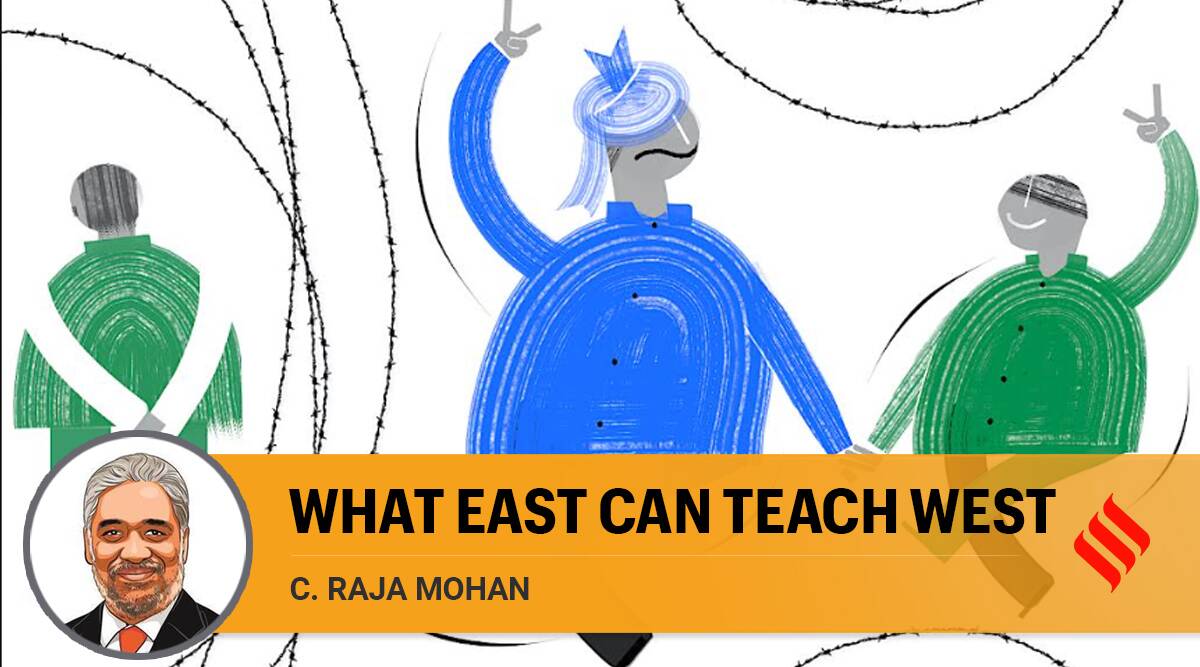[WMD] India-Pakistan Nuclear Dynamics
The WMD Project is an ongoing endeavour by the APLN’s network of experts to assess regional security issues, proliferation challenges, and flash points in the Asia-Pacific.
Click on the link to the left-hand side to download the full report.
This report by APLN member and former Indian Ambassador Rakesh Sood examines the India-Pakistan nuclear relationship by analysing crises between the two states, the origins of the conflict, and how changing internal political dynamics in both countries have influenced and shaped the broader nuclear relationship.
Ambassador Sood compares the nuclear doctrines of both countries, current nuclear capabilities and future plans for their nuclear arsenals, including in the context of emergent technologies in the Asia Pacific region. He also assesses the role of external actors, including the United States and China. He makes the case that India-Pakistan nuclear dynamics are affected by the recent geopolitical shift of global power politics from the Euro-Atlantic to the Indo-Pacific.
To ensure that the nuclear threshold is not crossed between these two countries, Ambassador Sood outlines steps that can be taken, unilaterally, bilaterally, and globally. He makes the case that a nuclear dialogue between India and China would help, particularly if Pakistan agreed to a trilateral no-first-use understanding, since India and China have already adhered to this. Moreover, a bilateral or multilateral dialogue on new emergent technologies may facilitate shared understanding about the risks with these technologies and on how they can be regulated.
The key highlights from the report are:
- As of January 2021, India has an estimated 156 nuclear weapons and Pakistan is estimated to have 165 nuclear weapons.
- India’s nuclear arsenal was adopted to project nuclear threat against China and Pakistan and to countervail their nuclear threats to India. Pakistan’s nuclear arsenal is aimed only at India to offset India’s conventional and nuclear forces. Given this dynamic, it is not possible to look at the India-Pakistan rivalry through the Cold War ideological prism of the US-Soviet Union nuclear deterrence dyad.
- India’s two-front nuclear challenge combined with its No First Use nuclear doctrine requires it to rely on conventional military and non-military means to respond to Pakistan’s incursions. This enables Pakistan in turn to assert its prerogative of nuclear first-use and to forward-deploy its tactical nuclear weapons to emphasize this choice.
- The doctrinal asymmetry and differing interpretations of crises have raised concerns about nuclear escalation in conflicts between the two countries.
- Pakistan has sought to compensate for its disparity (geographic, demographic and economic) with India by resorting to asymmetric warfare (state-sponsored and cross-border terrorism) and seeking alliances.
- In an India-Pakistan crisis escalation scenario, India typically seeks to enhance its space for military action without crossing Pakistan’s redlines. Pakistan seeks to blur these redlines to flash the nuclear card at the earliest possible time to draw in external actors.
- External actors like the United States, Russia, China, and Saudi Arabia and United Arab Emirates have hitherto helped defuse tensions. However, external actors may not be able to provide off-ramps in the future as readily as in the past.
- Given these realities the risk of inadvertent nuclear escalation will continue.
Recommendations include:
- A dialogue between India and Pakistan is essential for crisis management as dependence on external actors to mitigate crises is not politically tenable in the long run.
- Expectations need to be modest to prevent overloading the dialogue process as dialogue is unlikely to resolve fundamental differences such as the Kashmir dispute.
- At a regional level, a nuclear dialogue between India and China would help, particularly if Pakistan could be drawn into a trilateral no-first-use understanding, as both India and China have adhered to it.
- A global no-first-use agreement would put pressure on Pakistan to follow suit.
- A bilateral or multilateral dialogue on new emergent technologies may also facilitate shared understanding about the risks associated these technologies and on how they can be regulated.
About the Author
Rakesh Sood is a former Indian diplomat, columnist, writer and expert on foreign affairs. He is a Distinguished Fellow at the Observer Research Foundation, New Delhi. Rakesh Sood was appointed then Prime Minister’s (Mr. Manmohan Singh) special envoy for disarmament and non-proliferation in September, 2013. He has served as India’s Ambassador to Afghanistan and Nepal, Ambassador and Permanent Representative to the Conference on Disarmament in Geneva. He has also served as Deputy Chief of Mission in the Embassy of India in Washington DC. Among his other assignments abroad, Rakesh Sood has been First Secretary and Counsellor in India’s High Commission in Islamabadand First Secretary in the Permanent Mission of India to the United Nations Offices in Geneva, apart from serving in India’s diplomatic missions in Brussels and Dakar. He also served as Indian Ambassador to France with concurrent accreditation to Monaco. At the Ministry of External Affairs, he was Joint Secretary heading the Disarmament and International Security Affairs Division.
This paper was presented to the APLN Weapons of Mass Destruction (WMD) in the Asia-Pacific Workshop, December 1-4, 2020, and is part of an upcoming edited volume from experts in the region titled “WMD in Asia Pacific: Trends and Prospects,” which is scheduled to be published later in 2021. The workshop was funded by the Asia Research Fund (Seoul).
Disclaimer: The views expressed in this report do not necessarily reflect the position of the Asia Pacific Leadership Network or any of its members.
Image: iStock/ Racide

![[WMD] India-Pakistan Nuclear Dynamics](https://cms.apln.network/wp-content/uploads/2021/09/KakaoTalk_Photo_2021-10-01-16-29-43-006.png)


